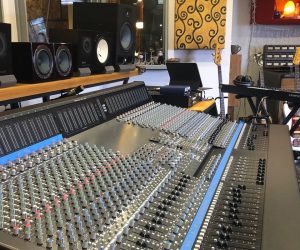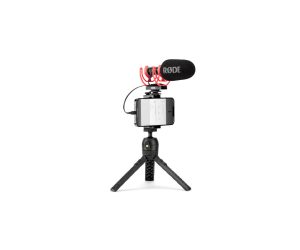
Damien Lewis at 2200 Studios
Lewis links three Harrison Audio 500 Series for an epic signal chain.
The Record Plant’s Sausalito studio complex, where Stevie Wonder, Fleetwood Mac and Sly Stone recorded classic albums, opened on Halloween 1972 but eventually was shuttered in 2009 after several changes of ownership. Relaunched in early 2024 as 2200 Studios, with Damien Lewis now installed as director of operations and chief engineer, the famed facility is working to renovate and fully re-equip its three rooms, recently adding three pairs of Harrison Audio’s new 500 series analog modules — the 32Cpre+, MR3eq and Comp — for use anywhere in the complex.
Lewis, a Grammy Award-winning mix engineer and producer whose credits include Justin Timberlake, Lizzo, Rhianna and Beyoncé along with many others, linked each set of three 500 series modules to operate as a channel strip. “It’s awesome and sounds clean, articulate and punchy, like you’d expect,” he reports. “It sounds like a really good, really high-quality piece of gear that you would want in your signal chain.”
The Harrison legacy in 500 Series format
Harrison consoles have played a pivotal role in shaping some of the most celebrated and influential music in history. Iconic artists such as Michael Jackson, Fleetwood Mac, Led Zeppelin, Steely Dan, and many others have relied on Harrison consoles to craft their multi-platinum albums. The Harrison 500 Series brings the essential features of their high-performance studio consoles from the ’70s, ’80s, and ’90s into the compact and versatile 500 Series format.
The 32Cpre+, which features Harrison’s renowned high and low pass filters, incorporates the same transformer-coupled microphone preamp as the new 32Classic analogue console, which derives its design from the brand’s legendary 32C desk, introduced in 1975.
“I configured the modules inside the 500 Series chassis using the dip switches, with the preamp, feeding the EQ, then the compressor,” Lewis continues. “Sometimes I switch those around to preamp, compressor, EQ. I often like having the output gain of the compressor as last in the chain. Then I can push into the compressor or subtract what’s hitting the compressor with the EQ.” Typically, Lewis is conservative with his settings, he says: “But I do like a little EQ and compression on the way in; I’m not scared to commit with these units.”
Sonic versatility in a small package
Lewis will typically clean up a signal using EQ and filters when tracking to make mixing a little easier. “I always use a little bit of high pass filter, especially if there’s a compressor after it,” he shares. “It lets the compressor react a little more naturally to the signal and not have a lot of low rumbly stuff start to trigger it. If I can clean up the signal a little bit before the compression, then the compressor can grab onto the upper-mid harsh stuff, which is what I want it to react to, almost in the way that a sidechain would. Then I usually pull out a little bit of mid-range and some 250 Hz; I don’t typically add a lot of top-end at this phase. I’m just taking away the stuff that I don’t want later.”
The new Comp module offers all the features that he expects from a compressor, he continues. “I really like VCA compression; I like its speed and transparency, but it can also dig in when needed. I tend to like a medium or slow attack on the way in and a faster release. So I like the kind of compressors where I can dial in the threshold and ratio to even out the performance and not completely smash it, or have nothing happen at all. The Comp module behaves exactly the way I expect it to, based on my experience with other VCA compressors.”
Reamping and other creative applications
Lewis often reamps tracks, including vocals, through his pedalboard. “I do crazy effects so it’s useful to come out line level and go through that, then I can do a little bit of eqing and have control over the output side of the pedal board on the way back into Pro Tools. I record a lot of virtual guitar amps, so having a DI on the front of the 32Cpre+ makes it super easy to do that.”
The six Harrison modules, linked together as two separate channel strips, are mounted in a rack and available in any room at 2200 Studios. “Pretty much everyone that’s used it has said that it sounds great. The fact that it does get a positive reaction is a testament to the sound of it. Everyone who has come through that’s gotten their hands on it has really been blown away by it.”
Harrison at The NAMM Show 2025
Visit Harrison Audio (booth 18301)1 at the NAMM Show 2025, where they will have the entire range of 500 Series available for demonstration, in addition to Mixbus 10 and LiveTrax software. For those focused on large-format consoles, the 32Classic console will also be in attendance. To book a personalized demonstration, please the Harrison NAMM Show events page: https://harrisonaudio.com/events/namm-show-2025

















RESPONSES